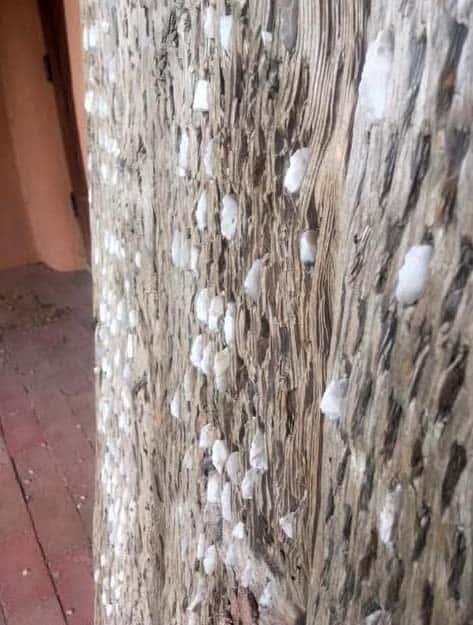A Threshing Sled
by Amanda Mather
So, you may wonder—what is this thing you’re looking at? Is it a cart of a thousand tiny cuts? A medieval torture device? The world’s meanest sled? Well, it’s pretty much the last one—it’s a threshing sled!
Take this bad boy, throw some wheat on a threshing floor, then drag it behind a mule or horse and it will separate the wheat from the hay using the hundreds, if not thousands. A large threshing sled consists of about 3,000 pieces of stone; sharp bits of flint or obsidian. This was the first process in getting the actual seed of the wheat, (the delicious part), and separating it from the not so tasty stuff. There are other stages, but they sound challenging and boring so I won’t go into it right now.
The threshing sled has been with us since we decided wheat was a good thing, which was about 8,000 years ago. To the shock and awe of no one, threshing sleds showed up where wheat showed up, first in the Middle East and then around the rest of the planet as wheat arrived through trade from place to place.
Throughout history, people were really excited to talk about the threshing sled. It shows up quite a few times in the bible and in Roman and Greek literature as well. Cato talked about it, Pliny talked about it; apparently it was a popular item.
The major center for making threshing sleds was Cantalejo in Spain starting around the 11th century. Anyone who needed wheat threshed after the 11th century in Europe had a threshing sled from Cantelejo. This industry continued to sustain Cantelejo well into the 21st century. Briqueros, the threshing sled makers, developed their own secret language called Gaceria by which they could discuss business—and all things threshing sled—safe from the prying ears of customers or passersby.
The threshing sled you see here in the Spanish style, but was more than likely manufactured in the US using local materials including the wood and the flint.
Although threshing sled use has fallen out of practice amongst more industrialized countries, this technique is still used in many places around the world to this day—if it ain’t broke for the last 8,000 years don’t fix it, right?
The threshing sled here at Las Golondrinas can be found in our exhibit hall, waiting with breath that is bated to give a little love nip to those that dare get to close. I can personally attest to its propensity for nipping.


